Today Christina E. Pilz is here with me to discuss her latest novel, Oliver & Jack: In Axminster Workhouse (Fagin’s Boy, Book Three).
Welcome, Christina. Let’s get started, shall we?
Tell us about your novel.
CP: It’s a story about two young men who have been arrested and are being held in a parish workhouse for the quarterly legal sessions, so that they can be tried and convicted for theft.
 That’s the single sentence description, but more, the book is about Oliver and Jack going into the crucible of the workhouse, where every action is dictated, every bite of food is monitored, and punishment is meted out in such unpredictable ways that they cannot shield themselves or keep themselves safe.
That’s the single sentence description, but more, the book is about Oliver and Jack going into the crucible of the workhouse, where every action is dictated, every bite of food is monitored, and punishment is meted out in such unpredictable ways that they cannot shield themselves or keep themselves safe.
It’s also about what one person is willing to do for someone they love. In this case, Jack steps up and trades his own safety for Oliver’s.
If writing Fagin’s Boy was a constant daydream for many years, then writing a book like Oliver & Jack: In Axminster Workhouse was a super-secret daydream that hid deep within my psyche. It went so deep that even while writing it I could not articulate why I would put my characters through such hell, nor even explain why I knew so much about 19th century workhouses.
Finally writing this particular book and finishing it, seeing it in solid form, was like watching part of me come alive that wasn’t alive before. Each book brings its own pleasure and its own pain, but I think I will be hard-pressed to experience something like this again.
P.S. Oliver and Jack suffer in this book. You have been warned.
What prompted you to write about this historical event?
CP: I’ve always been interested in workhouses, and the Poor Laws of 1834 that dictated that being poor is the fault of the pauper, and that people who are down on their luck should be made to feel horrible about themselves and their circumstances. That’s what they did back in the old days; if you were poor, you probably were lazy or foolish or simply not worthy to enjoy life’s bounty. And that’s the way you got treated, even if all the cards were stacked against you and it wasn’t your fault how poor you were, you were still to blame.
The Poor Laws came along to homogenize the workhouse experience and punish people for needing assistance; the buildings were designed by committee and were meant to terrify. The diet was meant to starve. The daily work was meant to grind you down; one report states that paupers inside the workhouse had to pick 5 and ½ pounds of oakum per day, which was twice as much as had to be picked by convicts in the prisons.
But really, the bottom line is that I like writing about the underdog. I like putting my characters through hell and watching how they struggle out of it. Because they always do come out of it, for even if I am cruel to my characters, I do like a Happily Ever After, or at least a Happily Ever After For Now.
How closely did you stick to the historical facts? If you used them loosely, how did you decide whether to deviate from them?
CP: I followed the facts about workhouses almost to the letter; all of what happens in In Axminster Workhouse can be traced back to an actual occurrence at a real workhouse.
I studied how paupers were treated and incorporated the ideas behind personal stories from the 1800’s. As well, I read entries from the day books that the masters of the workhouses kept; the day books contained a chronology of who was admitted and why, what food they were fed, what clothes they wore, what work they did, and what punishments were handed out.
I also read up on the reviews done by the overseeing committees when they went to examine the state of a particular workhouse. The reports always seemed to say that people slept in filthy beds with too many to a bed, with only a bucket in the corner for a lavatory, and with rain coming in the window.
I keep waiting for someone to write to me and say “Oh, this is too harsh, this really didn’t happen.” And then I’ll proudly pull out my notes and links and show them that yes, it did.
What research did you do for this book?
CP: I’m not even a little bit ashamed to say that I did tons of research for this book. But then, any historical writer will tell you what I’m telling you now: research is the most fun you will ever have while writing a book.
I read everything that I could on that era, visited every website, and mulled it over in my head.
I had several go-to websites. One was The Victorian Web, which lists and details just about anything you might want to know about the Victorian era. Another is David Perdue’s Charles Dickens Page, which examines all aspects of Dickens’s life and work, and includes interactive maps of locations mentioned in his books.
The finest website of all was Peter Higginbotham’s Workhouse site. I must have spent hours going over various maps and images, examined the Workhouse Rules section, and the Glossary, and well, frankly, I pretty much read all of it. Mr. Higginbotham is such a champion collector of the most fascinating information about workhouses, so there was a lot to read. But I read it. All of it.
As for books, I have several favorite authors whose books I have not only read, but also studied. One is Liza Picard. She writes about the era that I’m interested in, Victorian England circa 1846, and no detail is too small for her to write about, which thusly turns into my pleasure to read about. It is from her that I learned that sugar was molded into cones, and that these cones were wrapped in blue paper, because it was thought that blue paper kept the flies away.
Another favorite of mine is Judith Flanders. I bought her book The Victorian City, because I sometimes get into a mood where I want to immerse myself in the culture that I’m writing about, and this rather than writing about it!
If there’s one book I’m glad I read, it’s The Victorian City, because of the amount of details about the small things, the everyday experiences of the common man, is astounding and quite useful. For example, did you know that they used to run boat excursions from London to Greenwich, where you could attend a fish fry? To me that sounds like the most fun, so I’m desperately trying to figure out a way for it to at least get a mention, if not actually having Oliver and Jack buy tickets and go themselves.
Last but not least is the book At Home: A Short History of Private Life by Bill Bryson. I have it on audio read by Mr. Bryson himself, and I’ve listened to it more often than I care to admit, almost to the point of memorizing it. Mr. Bryson is no slouch when it comes to the small details either, and it’s those small details that make a good story.
Do you use a mixture of historic figures and invented characters in the novel. Which is more difficult to write? Which to you prefer to write and why?
CP: I once stated that I wouldn’t want to use a real historical character, on account of so much is known about them, I wouldn’t want to get it wrong. So I prefer invented characters, as you can do more with them.
There are historical figures mentioned in my books, for example the owner of Rhode Hill House in my book Oliver & Jack: At Lodgings In Lyme. His name was Sir John Talbot, and he seemed like a nice, decent fellow so I didn’t want to make him the bad guy. But I needed a bad guy, so I determined that someone had painted Sir John’s bedroom with Scheele’s Green (which is very toxic), and that he had to go to Brighton to get his health back. The housekeeper, Mrs. Heyland, was happy to step in as the bad guy in his absence.
In In Axminster Workhouse I did not use any real historical figures, which was due to the limited scope of the book. If you’re inside of a workhouse, you have the master, the workmaster, and other staff members, as well as other paupers, and that’s pretty much it.
In an historical novel you must vividly re-create a place and people in a bygone era. How did you bring the place and people you are writing about to life?
CP: One thing I do is make sure that I use all the five senses when writing, which is pretty standard writing advice. Only I’ve found that if you use all of them in the same scene, it can be overwhelming. So I make sure that I use the senses that are most appropriate for that scene.
Also, I put in small details that a character in that scene might notice, even if it won’t move the plot forward. For example, in Axminster, Oliver and Jack stop to beg a bowl of milk from a farmer who is milking his cow. The bowl is white with blue decorations on it, and has a chip along the rim that the boys must avoid when drinking out of it.
Then I go on to describe how the milk feels and tastes having come straight out of a cow. For that, I pulled on the one time I helped a friend milk some goats, which of course led to me asking if I could drink raw goat milk straight from the goat, just like Heidi, you know? You never know what experience might be useful in a book.
In part, the answer to your question is that I pull on real-life experiences that I just happen to have, most of which relate to the Victorian era, and which I seek out on purpose. The other part is that I go inside of the character’s head, and see through their eyes.
There often seems to be more scope in historical novels for male characters rather than female characters. Do you prefer to write one sex or the other. And, if so, why?
CP: I have to admit that I’ve not noticed that there is more scope for male characters than female characters. But if it is true, then it might be because history was written about men, by men, for men, and so, perhaps, historical novels reflect that. Or maybe it’s because the Male Eye is the one that dictates what gets published or put on TV or shown in theaters, and the Male Eye sees only the Self, and women are given short shrift.
Personally, I prefer characters that feel real, whether male or female. There’s nothing more boring than a two-dimensional character, no matter what the gender, or era, for that matter. I like it when real characters live real lives, so I tend not to read about anybody who lives in an ivory tower. That is, I don’t like to read about the rich and the powerful.
One example is that I preferred the episodes of Downton Abbey that focused on the below-stairs characters, like my character Thomas Barrow, the Bad Boy With a Heart of Gold. That is to say, I like my historical novels to be a bit more gritty and dirty than is allowed by watching Lady Mary trying to figure out which beau she’ll say Yes to. But then, I’ve always preferred the Pauper to the Prince.
Thanks for answering my questions, Christina.
Readers can learn more about Christina by visiting her website and can connect with her on Facebook, Goodreads and Twitter.
About Christina E. Pilz: She was born in Waco, Texas in 1962.  After living on a variety of air force bases, in 1972 her Dad retired and the family moved to Boulder, Colorado. There amidst the clear, dry air of the high plains, as the moss started to grow beneath her feet, her love for historical fiction began with a classroom reading of Little House on the Prairie by Laura Ingalls Wilder.
After living on a variety of air force bases, in 1972 her Dad retired and the family moved to Boulder, Colorado. There amidst the clear, dry air of the high plains, as the moss started to grow beneath her feet, her love for historical fiction began with a classroom reading of Little House on the Prairie by Laura Ingalls Wilder.
She attended a variety of community colleges (Tacoma Community College) and state universities (UNC-Greeley, CU-Boulder, CU-Denver), and finally found her career in technical writing, which, between layoffs, she has been doing for 18 years. During that time, her love for historical fiction and old-fashioned objects, ideas, and eras has never waned.
In addition to writing, her interests include road trips around the U.S. and frequent flights to England, where she eats fish and chips, drinks hard cider, and listens to the voices in the pub around her. She also loves coffee shops, mountain sunsets, prairie storms, and the smell of lavender. She is a staunch supporter of the Oxford comma.

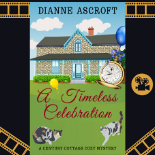




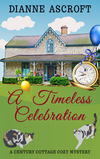

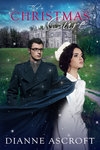
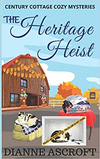
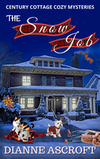
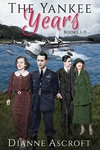

Pingback: Virtual Blog Tour for In Axminster Workhouse - Christina E. Pilz - Christina E. Pilz